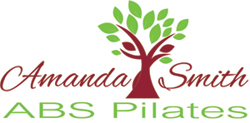The Shoulder Pain Puzzle!
Have you ever had shoulder pain? Pain when you lift something overhead or carry your groceries? Well, you are not alone.
Here are some quick facts about shoulder pain:
1. Twenty percent of the population will experience debilitating shoulder pain sometime in his/her life.
2. The majority of all shoulder pain is due to rotator cuff weakness and imbalances in the muscles of the shoulder girdle.
3. Most shoulder pain has no specific cause. It occurs gradually. Common causes of rotator cuff injury are repetitive overhead arm movements (volleyball, tennis, baseball and swimming), improper weight training, poor posture and the aging process of the joints.
4. Shoulder pain is the second most common orthopedic complaint to a primary care physician. Second to back pain.
So why is shoulder pain so common?
The shoulder joint is classified as a ball-and-socket joint. You have a large ball sitting on a very shallow socket. Very much like a golf ball sitting on a tee. The shoulder joint has a wider and more varied range of motion than any other joint in the body. It’s also the most unstable joint which means high risk of injury. Everyone has heard something about the rotator cuff and related problems, but how many of you know that the rotator cuff muscles play a very important role in proper shoulder function and injury prevention?
The rotator cuff consists of 4 muscles…supraspinatus, infraspinatus, teres minor and subscapularis (see image below). These four muscles attach around to head of the humerus (the ball). Their main purpose is to keep the head of the humerus in it’s socket as the arm lifts something, reaches overhead or throws something. Rotator cuff muscles fatigues from excessive use. This causes the rotator cuff tendons to touch with the bone, which can lead to irritation of the tendon, inflammation and pain (impingement syndrome).
Many times when someone is experiencing shoulder pain, his or her physician will send them to physical therapy. Physical therapy is a great place to start correcting those muscle imbalances and regaining range of motion and strength.
Once the pain is under control, Pilates is a great form of exercise that can address some of those muscle imbalances that lead to shoulder pain in the first place. Through specific movement patterns, Pilates can teach you how to effectively use the rotator cuff and scapular muscles, thus reducing strain on the shoulder joint and rotator cuff. And since Pilates emphasizes a whole-body focus, it will increase your awareness of how you use your neck muscles in relation to your shoulders and back, which further enhances your posture and reduces recurrence of injury.
Very often poor posture – forwarded head, rounded shoulder, abducted shoulder blades, rounded back – can cause shoulder problems and shoulder girdle dysfunction. Pilates improves posture by re-balancing muscle imbalances and enhancing posture awareness, shoulder range of motion and proprioception.
If you are experiencing shoulder pain, it is important that you first consult your physician. You may need skilled physical therapy to decrease the pain and increase the range of motion and strength of the shoulder. But then consider Pilates, how it corrects muscle imbalances, improves posture awareness and trains the body as a whole. So that you can remain pain free.
ABS Pilates offers private and semi-private sessions customized for the needs of each individual. ABS Pilates is a specialized Pilates studio lead by Amanda B. Smith, a licensed physical therapist and certified Pilates instructor with more than 20 years of experience.
Contact ABS Pilates today and solve the puzzle to your shoulder pain.
Resources: http://onsmd.com/2015/03/if-you-cant-do-the-simple-things-you-once-did-you-may-be-suffering-from-a-shoulder-condition/



